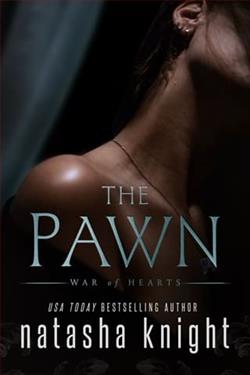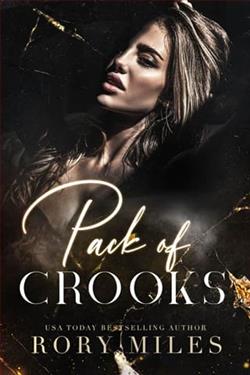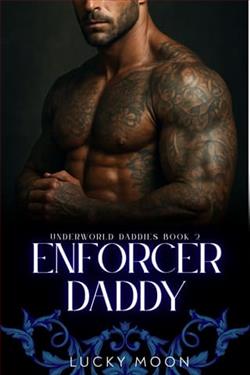Page 48 of The Dead Come to Stay
“We can hope it doesn’t continue inside.” MacAdams dangled door keys. “I think we’re neighbors.”
Jo opened the door and looked in. A very compact room with striped wall panels instead of paper or paint. But at least the carpeting was a dull solid blue.
“It’s not bad,” Jo said.
“Serviceable,” MacAdams agreed; he dropped his bag insidehis door and shut it again. “I’ve got to go meet Ashok now. Enjoy the exhibit.”
He tipped his hat (which he wore despite the favorable weather) and headed back down the hall. Jo would herself be walking—they were near the train station and it wasn’t that far. She gave a little chirrup of excitement. Chen promised to tell her about Uncle Aiden! But there was something wonderful and terrifying about fruition; she needed to be properly attired. Jo pulled out a tightly rolled black dress; sleeveless, high neck, a sheath. Next to her funeral dress, it was probably her favorite, and just slightly fancier. There was something deeply uncomfortable about being dressed wrong for an occasion; she hated standing out when she wanted to blend in. To really complete the look, a pair of heels would have been nice—but Doc Martens were technically always in style, weren’t they?
The York Art Gallery looked out upon Exhibition Square, both opened to the public in 1879. Jo had come by way of the lane and—improbably—a footpath called Dame Judy Dench Walk.It meant her phone navigation just instructed her to “turn left on Dame Judy.” The walk did her nerves some good, and before long she spotted her target. Planters with flowers ranged along the arches of its front doors, and already she could see a small knot of people outside. One of them waved a glass-handled umbrella at her.
Chen still wore the mandala jacket, though beneath was a striking orange pantsuit. She tapped the umbrella cane against the pavement.
“Support for the hips and the weather,” she said. “Are you ready to meet Augustus?” Jo was ready to meet Aiden, but this seemed the entrée.
“Very,” she agreed, following her through the doors and into a grand exhibition hall.
“It’s a special opening,” Chen explained. “Will be more crowded tomorrow, during regular hours.”
It wasalreadycrowded in Jo’s opinion. A diffuse background hum of private conversation surrounded them. Chen bypassed the sketches near the front, however. She crossed the room with purpose, and despite being the most striking person in the room, didn’t raise much of a glance. Between that and her expert navigation, Jo gathered, she was at the York museum rather a lot.
“Here we be,” Chen said, stopping in front of a large portrait. Seated as subject was a corpulent man in black, his abdomen filling the bottom of the frame, one arm resting on a near-invisible chair. His face, long, flat, topped with a wave crest of white hair and ending in a double chin, appeared vaguely surprised. “What do you know of Lord Leverhulme?”
Jo ran through her mental Rolodex.Leverhulme. There was a story she’d read...
“He hated the painting of himself, didn’t he?” Jo asked.
Chen clapped her delicate hands.
“Very good and very sanitized,” she said. “Have a close look at the canvas, not the man.”
Jo did so. A faint line appeared above the man’s head, and beneath, and on either side.
“You are standing before the headless painting,” Chen explained. “Leverhulme didn’t dislike it, he despised it. Was ashamed of it, even. Told Augustus John it didn’t favor him at all. John told him to pick up a paintbrush and fix it himself. He picked up scissors instead.” Chen’s eyes sparkled, and she flourished the sapphire-bearing hand toward the now-hard-to-mistake rectangle. “Cut his own head right out of the canvas, but by some mistake, the housekeeper packaged it up and returned it to Augustus John.Hecalled it the grossest insult and took the story to the papers.”
She stepped to the side of the portrait to reveal more of the museum curator’s comments along with a reproduction newsprint:Beheaded Portrait, it read.
“Imagine, pet. Artists went on strike. People protested inthe streets. They even burned Leverhulme in effigy. How verydarehe?”
Jo looked again at the painting. The man in the picture did not look pleasant. Self-important, perhaps, self-indulgent, but also curiously vacant.
“He looks—repulsive.”
“Oh yes,” Chen agreed. “Augustus John painted the inside on the outside, you see? A psychological portrait.Thatis what made him singular; that’s why he’s a master. He never painted to please the sitter. Now come, child. The gem of the collection is a portrait of Dylan Thomas, fellow Welshman.”
That, at least, was a name Jo knew well.
“‘Do not go gentle into that good night,’” she quoted—words the poet wrote as a plea for a dying father.
“That’s the one,” Chen agreed, turning her cheekbones up toward the canvas. “What do you make of young Dylan?”
Jo found herself mentally tracing brush strokes. This later painting lacked the careful rendering he’d done for Evelyn’s. It was as though his style grew disheveled, the subjects revealing themselves in bolder but less precise strokes. Yet looking at the portrait, Jo felt sheknewDylan Thomas. It was so different from the heavier, swallow-cheeked man whose brow shadowed large eyes in famous black-and-white photos. Instead, here was a youth, almost feminine, bright red curls hugging a high forehead, full lips like a rosebud, slightly parted. And the eyes: strange faraway eyes, wide with something like naive expectation married to the acceptance of fate. Behind him, black-and-blue clouds were streaked in angry white. Here was storm, uncertainty and yet acceptance and a willingness to walk on.Do not go gentle.
“Like Joan of Arc offering humanity to nothingness,” Jo said.
“Ah, pet! That is the perfect interpretation,” Chen said, her eyes moist and approving.
Jo felt a blush surging up the back of her neck.















